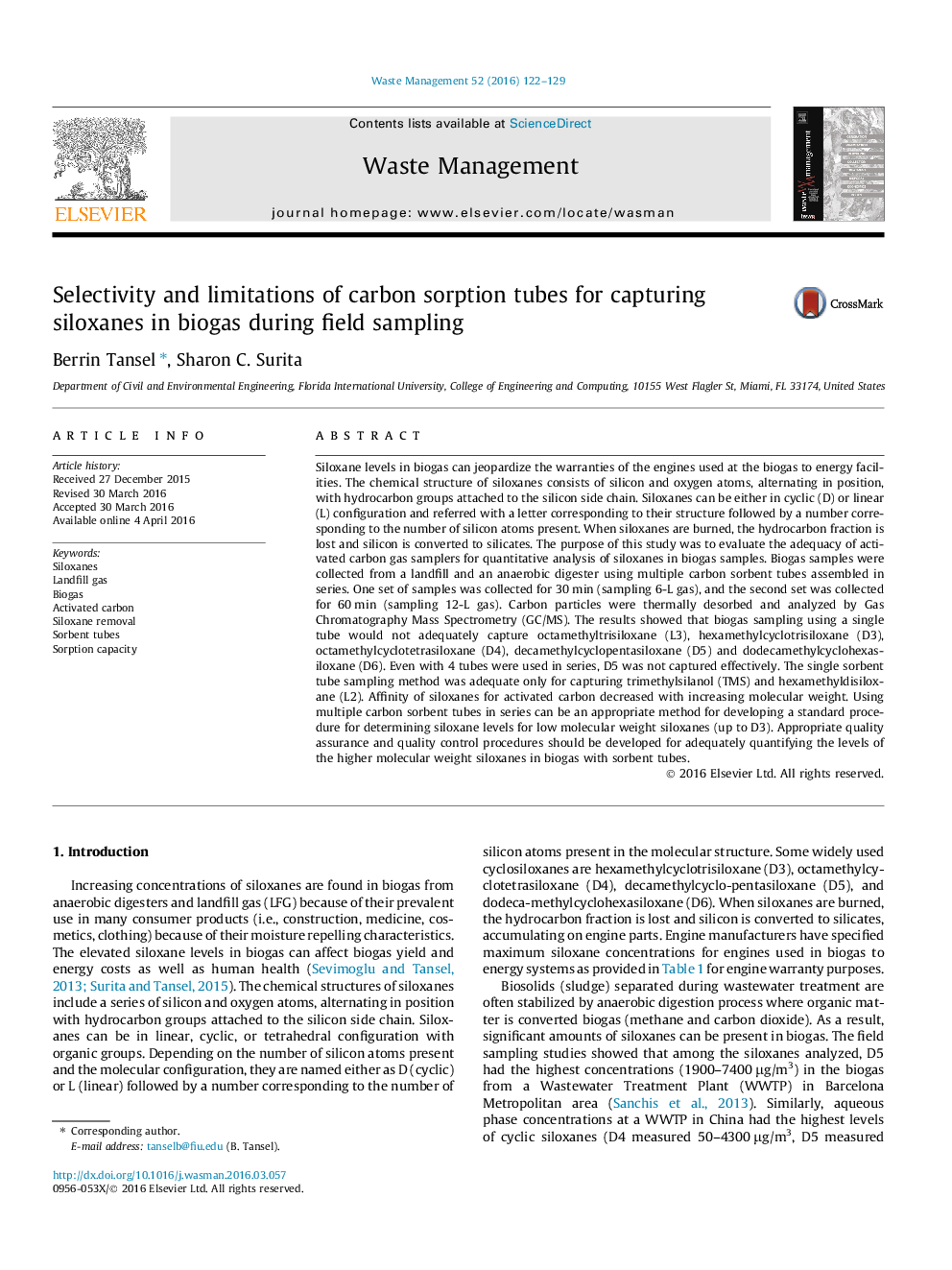| کد مقاله | کد نشریه | سال انتشار | مقاله انگلیسی | نسخه تمام متن |
|---|---|---|---|---|
| 4471234 | 1622634 | 2016 | 8 صفحه PDF | دانلود رایگان |

• Carbon sorbent tube sampling method for siloxanes in biogas was evaluated.
• Landfill gas and anaerobic digester gas was sampled for siloxanes.
• A single sampling tube did not adequately capture L3, D3, D4, D5 and D6.
• Even with 4 tubes in series, D5 was not captured effectively.
• Single sorbent tube sampling method was adequate for only trimethylsilanol and L2.
Siloxane levels in biogas can jeopardize the warranties of the engines used at the biogas to energy facilities. The chemical structure of siloxanes consists of silicon and oxygen atoms, alternating in position, with hydrocarbon groups attached to the silicon side chain. Siloxanes can be either in cyclic (D) or linear (L) configuration and referred with a letter corresponding to their structure followed by a number corresponding to the number of silicon atoms present. When siloxanes are burned, the hydrocarbon fraction is lost and silicon is converted to silicates. The purpose of this study was to evaluate the adequacy of activated carbon gas samplers for quantitative analysis of siloxanes in biogas samples. Biogas samples were collected from a landfill and an anaerobic digester using multiple carbon sorbent tubes assembled in series. One set of samples was collected for 30 min (sampling 6-L gas), and the second set was collected for 60 min (sampling 12-L gas). Carbon particles were thermally desorbed and analyzed by Gas Chromatography Mass Spectrometry (GC/MS). The results showed that biogas sampling using a single tube would not adequately capture octamethyltrisiloxane (L3), hexamethylcyclotrisiloxane (D3), octamethylcyclotetrasiloxane (D4), decamethylcyclopentasiloxane (D5) and dodecamethylcyclohexasiloxane (D6). Even with 4 tubes were used in series, D5 was not captured effectively. The single sorbent tube sampling method was adequate only for capturing trimethylsilanol (TMS) and hexamethyldisiloxane (L2). Affinity of siloxanes for activated carbon decreased with increasing molecular weight. Using multiple carbon sorbent tubes in series can be an appropriate method for developing a standard procedure for determining siloxane levels for low molecular weight siloxanes (up to D3). Appropriate quality assurance and quality control procedures should be developed for adequately quantifying the levels of the higher molecular weight siloxanes in biogas with sorbent tubes.
Figure optionsDownload as PowerPoint slide
Journal: Waste Management - Volume 52, June 2016, Pages 122–129